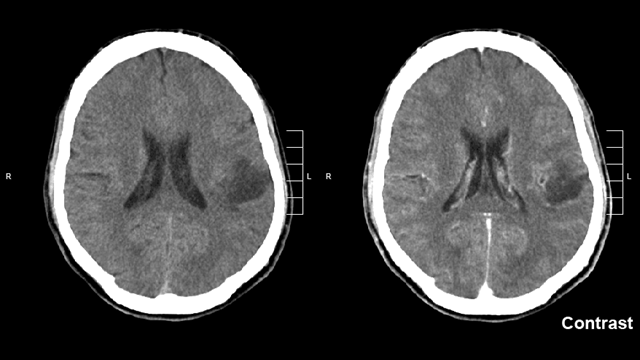Glioma Grading Clinical and Mutation Features
Gliomas are the most common primary tumors of the brain. They can be graded as LGG (Lower-Grade Glioma) or GBM (Glioblastoma Multiforme) depending on the histological/imaging criteria. Clinical and molecular/mutation factors are also very crucial for the grading process. Molecular tests are expensive to help accurately diagnose glioma patients. In this dataset, the most frequently mutated 20 genes and 3 clinical features are considered from TCGA-LGG and TCGA-GBM brain glioma projects. The prediction task is to determine whether a patient is LGG or GBM with a given clinical and molecular/mutation features. The main objective is to find the optimal subset of mutation genes and clinical features for the glioma grading process to improve performance and reduce costs.
Characteristics
Subject Area
Associated Tasks
Attribute Type
# Instances
# Attributes
Introductory Paper
By E. Tasci, Y. Zhuge, Harpreet Kaur, K. Camphausen, A. Krauze. 2022
Provided by
University of California, Irvine
Creators
- Erdal Tasci
- Kevin Camphausen
- Andra Valentina Krauze
- Ying Zhuge
DOI
Create an account!
Features
| Attribute Name | Role | Type | Demographic | Description | Units | Missing Values |
|---|---|---|---|---|---|---|
| Grade | Target | Categorical | Glioma grade class information (0 = "LGG"; 1 = "GBM") | N/A | no | |
| Gender | Feature | Categorical | Gender | Gender (0 = "male"; 1 = "female") | N/A | no |
| Age_at_diagnosis | Feature | Continuous | Age | Age at diagnosis with the calculated number of days | years | no |
| Race | Feature | Categorical | Race | Race (0 = "white"; 1 = "black or african American"; 2 = "asian"; 3 = "american indian or alaska native") | N/A | no |
| IDH1 | Feature | Categorical | isocitrate dehydrogenase (NADP(+))1 (0 = NOT_MUTATED; 1= MUTATED) | N/A | no | |
| TP53 | Feature | Categorical | tumor protein p53 (0 = NOT_MUTATED; 1 = MUTATED) | N/A | no | |
| ATRX | Feature | Categorical | ATRX chromatin remodeler (0 = NOT_MUTATED; 1 = MUTATED) | N/A | no | |
| PTEN | Feature | Categorical | phosphatase and tensin homolog (0 = NOT_MUTATED; 1 = MUTATED) | N/A | no | |
| EGFR | Feature | Categorical | epidermal growth factor receptor (0 = NOT_MUTATED; 1 = MUTATED) | N/A | no | |
| CIC | Feature | Categorical | capicua transcriptional repressor (0 = NOT_MUTATED; 1 = MUTATED) | N/A | no | |
| MUC16 | Feature | Categorical | mucin 16, cell surface associated (0 = NOT_MUTATED; 1 = MUTATED) | N/A | no | |
| PIK3CA | Feature | Categorical | phosphatidylinositol-4,5-bisphosphate 3-kinase catalytic subunit alpha (0 = NOT_MUTATED; 1 = MUTATED) | N/A | no | |
| NF1 | Feature | Categorical | neurofibromin 1 (0 = NOT_MUTATED; 1 = MUTATED) | N/A | no | |
| PIK3R1 | Feature | Categorical | phosphoinositide-3-kinase regulatory subunit 1 (0 = NOT_MUTATED; 1 = MUTATED) | N/A | no | |
| FUBP1 | Feature | Categorical | far upstream element binding protein 1 (0 = NOT_MUTATED; 1 = MUTATED) | N/A | no | |
| RB1 | Feature | Categorical | RB transcriptional corepressor 1 (0 = NOT_MUTATED; 1 = MUTATED) | N/A | no | |
| NOTCH1 | Feature | Categorical | notch receptor 1 (0 = NOT_MUTATED; 1 = MUTATED) | N/A | no | |
| BCOR | Feature | Categorical | BCL6 corepressor (0 = NOT_MUTATED; 1 = MUTATED) | N/A | no | |
| CSMD3 | Feature | Categorical | CUB and Sushi multiple domains 3 (0 = NOT_MUTATED; 1 = MUTATED) | N/A | no | |
| SMARCA4 | Feature | Categorical | SWI/SNF related, matrix associated, actin dependent regulator of chromatin, subfamily a, member 4 (0 = NOT_MUTATED; 1 = MUTATED) | N/A | no | |
| GRIN2A | Feature | Categorical | glutamate ionotropic receptor NMDA type subunit 2A (0 = NOT_MUTATED; 1 = MUTATED) | N/A | no | |
| IDH2 | Feature | Categorical | isocitrate dehydrogenase (NADP(+)) 2 (0 = NOT_MUTATED; 1 = MUTATED) | N/A | no | |
| FAT4 | Feature | Categorical | FAT atypical cadherin 4 (0 = NOT_MUTATED; 1 = MUTATED) | N/A | no | |
| PDGFRA | Feature | Categorical | platelet-derived growth factor receptor alpha (0 = NOT_MUTATED; 1 = MUTATED) | N/A | no |
